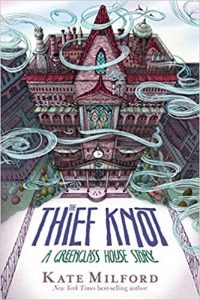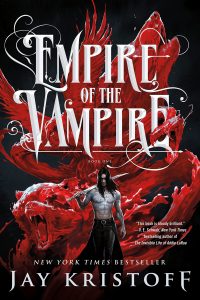Faren Miller reviews Erika Johansen
Though the galley of Erika Johansen’s debut The Queen of the Tearling arrived with promotional material that trumpets its sale to a major film company, sets the action firmly three centuries in the future, and reduces the plot to a few familiar tropes (‘‘A Young Woman, A Kingdom, An Evil Enemy, a Birthright Foretold…’’), Johansen won me over with something [Sheila] Finch [in Myths, Metaphors, and Science Fiction: Antique Roots of the Literature of the Future] sensed as a girl reading stories by Ray Bradbury and gradually came to understand as ‘‘the apparently effortless ability of simple words’’ – images – ‘‘to stir emotion.’’
Here’s the teenage heroine’s initial response to a palace bedroom:
Kelsea woke in a deep, soft bed hung with a light blue canopy. Her first thought was a trivial one: the bed had too many pillows. Her bed in Barry and Carlin’s cottage had been small, but clean and comfortable, with a single serviceable pillow. This bed was comfortable as well, but it was an ostentatious sort of comfort. The bed could easily have held four people, its sheets were pear-colored silk, and an endless vista of small, frilly white pillows stretched across the blue damask coverlet.
She concludes, ‘‘My mother’s bed, and just what I should have expected.’’
Raised by a pair of guardians on a homestead far from Tearling’s royal capital New London (where her uncle became Regent upon her glamorous mother’s early death), Kelsea Glynn is a tall, rather ungainly 19-year-old girl who loves to read, likes to eat, isn’t afraid to dirty her hands with practical matters, but has no real experience of the world. Now that she’s finally old enough for some politicians in New London to proclaim her its rightful queen, she can’t dismiss self-doubts with confidence in a Birthright Foretold, and has little idea how to approach the job. Nonetheless, she’s intelligent and observant, with an ethical backbone that will keep her steady in circumstances where others might be tempted to institute widespread purges, or yield to prevailing corruption. Confronted with an active slave trade that periodically sends a slew of victims to the neighboring kingdom where the Red Queen reigns, this unheroic heroine resolves to stop it – immediately!
Life has a nasty tendency to mess up major thought experiments, subverting efforts to change the course of history and achieve utopia. Several hundred years before this book begins, the bold explorer William Tear and some fellow idealists took matters into their own hands and made The Crossing, a journey from our world to one left unspoiled – somehow – by overpopulation, high tech or established religion. (Johansen reserves explanation of the method used, and exactly where it took them, for later volumes). Like most raw settlements with a few relics and dwindling memories of past sophistication, theirs devolved. The loss left room for other elements to intrude: strange magics, and equally mysterious jewels that counter the worst kinds of strangeness and amplify the good.
Or so it seems. Johansen leaves room for other possibilities by emphasizing how human all the characters can be (even the long-lived Red Queen) and showing the world in glimpses, from many angles. Like Kelsea, we’re strangers who can only try to piece together the bigger picture from fragments – for us, these are chapters that move among a number of viewpoint characters; for her, snatches of dream-vision that culminate here:
Kelsea glimpsed wonders, so briefly that she didn’t have time to understand them, or even to mourn their passing. She could see everything, the future and the past, her vision stretching into a place where time and land merged into one.
Despite the evanescence, it leaves her with a sense of mission and adult responsibility.
Finch noted how some fiction (from Ender’s Game to tales of Harry Potter) discards logic yet grabs the imagination with the primal archetype of ‘‘the unlikely person called to right a wrong,’’ the Stranger bound to bring healing and redemption to a Wounded Land. The Queen of the Tearling portrays the early stages of a quest where reason may be more relevant than you might expect.








